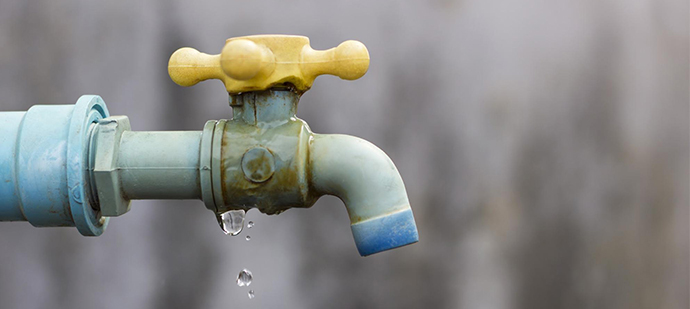Expose Hidden Water Line Leaks: Six Tested Techniques for Detecting
Expose Hidden Water Line Leaks: Six Tested Techniques for Detecting
Blog Article
We've uncovered the article about Hacks to detect leaks listed below on the internet and believe it made good sense to discuss it with you here.

Early discovery of leaking water lines can reduce a possible disaster. Some tiny water leaks may not be visible.
1. Take A Look At the Water Meter
Every residence has a water meter. Checking it is a surefire way that helps you find leaks. For beginners, switch off all the water resources. Ensure no one will flush, make use of the tap, shower, run the cleaning equipment or dish washer. From there, most likely to the meter as well as watch if it will certainly alter. Because nobody is using it, there ought to be no activities. If it relocates, that shows a fast-moving leakage. If you find no adjustments, wait an hour or 2 and also inspect back again. This implies you may have a sluggish leak that can even be underground.
2. Inspect Water Intake
If you spot unexpected adjustments, regardless of your usage being the same, it suggests that you have leaks in your plumbing system. A sudden spike in your costs suggests a fast-moving leakage.
A consistent rise every month, even with the exact same routines, reveals you have a slow leak that's also slowly intensifying. Call a plumber to completely inspect your residential or commercial property, particularly if you really feel a warm location on your flooring with piping below.
3. Do a Food Coloring Test
When it comes to water intake, 30% comes from bathrooms. Test to see if they are running appropriately. Drop flecks of food color in the storage tank and wait 10 mins. There's a leakage between the tank as well as bowl if the shade somehow infiltrates your dish during that time without flushing.
4. Asses Outside Lines
Don't neglect to check your outside water lines also. Test spigots by attaching a garden tube. Ought to water leak out of the link, you have a loose rubber gasket. Replace this as well as ensure all links are limited. If you've got a lawn sprinkler, it will certainly assist get it properly examined and maintained annually. One tiny leakage can waste lots of water and also increase your water costs.
5. Check and also Analyze the Situation
House owners should make it a routine to inspect under the sink counters and also even inside closets for any type of bad odor or mold growth. These two warnings suggest a leak so punctual interest is called for. Doing regular evaluations, even bi-annually, can save you from a major issue.
Check for discolorations and compromising as many pipes and appliances have a life span. If you presume leaking water lines in your plumbing system, don't wait for it to rise.
Early discovery of leaking water lines can mitigate a possible catastrophe. Some tiny water leakages might not be visible. Examining it is a guaranteed means that assists you discover leakages. One tiny leakage can squander tons of water and increase your water bill.
If you think leaking water lines in your plumbing system, do not wait for it to intensify.
WARNING SIGNS OF WATER LEAKAGE BEHIND THE WALL
PERSISTENT MUSTY ODORS
As water slowly drips from a leaky pipe inside the wall, flooring and sheetrock stay damp and develop an odor similar to wet cardboard. It generates a musty smell that can help you find hidden leaks.
MOLD IN UNUSUAL AREAS
Mold usually grows in wet areas like kitchens, baths and laundry rooms. If you spot the stuff on walls or baseboards in other rooms of the house, it’s a good indicator of undetected water leaks.
STAINS THAT GROW
When mold thrives around a leaky pipe, it sometimes takes hold on the inside surface of the affected wall. A growing stain on otherwise clean sheetrock is often your sign of a hidden plumbing problem.
PEELING OR BUBBLING WALLPAPER / PAINT
This clue is easy to miss in rooms that don’t get much use. When you see wallpaper separating along seams or paint bubbling or flaking off the wall, blame sheetrock that stays wet because of an undetected leak.
BUCKLED CEILINGS AND STAINED FLOORS
If ceilings or floors in bathrooms, kitchens or laundry areas develop structural problems, don’t rule out constant damp inside the walls. Wet sheetrock can affect adjacent framing, flooring and ceilings.
https://www.servicemasterbyzaba.com/blog/how-to-detect-water-leakage-in-walls/
.jpg)
I stumbled upon that write up on Locating water leaks while browsing on the web. Do you know another individual who is interested by the subject? Take a moment to promote it. Thank you for your time invested reading it.
Protect your space! Report this page